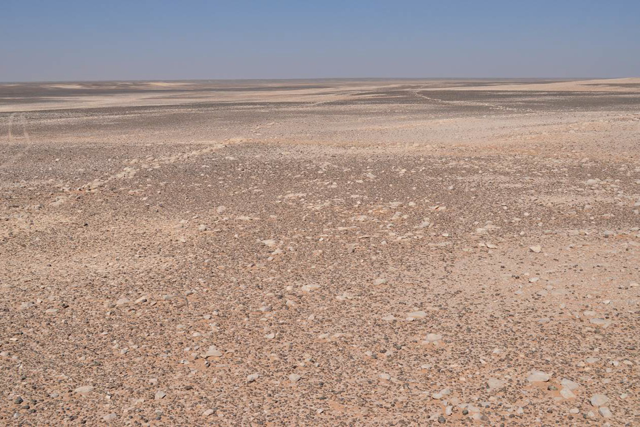
AMMAN — Early in 2022, archaeologists uncovered eight habitation areas in southeastern Jordan. These locations are closely linked with eight large-scale hunting installations known as "desert kites." The dating evidence indicates these related sites fall within the late Pre-Pottery Neolithic B period.
The archaeological materials from various sites primarily consist of numerous stone tools, displaying remarkable consistency and uniformity across them all.
"Given the distinctive features of the complete stone collection, a novel regional technological complex named 'Ghassanian' has been identified for these arid zones at the edge of the Fertile Crescent," stated French archaeologist René Cressard.
Cressard mentioned that numerous arrowheads were found across all occupational levels at sites JKSH F19, P52, and F15. These arrowheads were crafted from small, finely grained chert blades; some may have been brought in through trade, with others being made of quartzite.
The archaeologist mentioned that the debris from small, finely grained chert and quartzite blades appears to be predominantly used for this particular manufacturing process.
During the preform stage, blanks are modified using direct, inverse, or bifacial retouch with a soft stone hammer. Later, they undergo pressure flaking followed by final invasive retouch to complete the tool.
As seen from a typological perspective, these findings from the Jibal Al Khashabiyeh sites share similarities with those recognized in the Southern Levant during the Final PPNB period, particularly concerning single-stemmed blades like the Jericho, Byblos, and Amuq varieties," Cressard noted. "They also align with artifacts from the Late Neolithic era, including unifacial or bifacial tools characterized as single-stemmed or barbed and stemmed, akin to examples such as ha-Parsa, Nizzanim, and Herziliya.
Various kinds of arrowheads discovered at the Jibal Al Khashabiyeh sites might represent another significant feature of these collections and the identified technological complex.
A deeper analysis of the Jibal Al Khashabiyeh sites will provide essential insights into the regional chronology and typology, as well as facilitate comparisons with other parts of the Levant during the same era," Cressard pointed out, noting additionally that the flint utilized for making blades is locally sourced and appears as medium-sized slabs on the present-day surface of the region.
At the JKSH P52 location specifically, numerous small, blade-like daggers were discovered clustered together outside the living area, closely associated with substantial amounts of flakes resulting from two-sided tool modification.
Cressard explained that these daggers went through various stages of completion, with the majority appearing to be finalised. He also mentioned that many might have broken during production, presumably taking place in a specialized workshop section.
It would be useful to examine potential signs of usage on both the bifaces and the blades to determine if particular functions can be linked specifically to each kind of tool.
"As evidenced by their association with faunal remnants, the utilization of either or both seems like a plausible theory. Specifically, curved maces represent an exclusive category of tools during the period when Jibal Al Khashabiyeh was inhabited. These were connected to the application of kite structures, and currently, no similar examples have been identified within the broader region of the Near East," emphasized Cressard.
The archaeologist observed that this level of detail might indicate a specific purpose for these tools, possibly related to handling items from hunts.
The initial findings from the microscopic wear analysis of the chipped stone tools at site JKSH P52 offer promising avenues for future research regarding how we comprehend the inhabitation of this location and the societal as well as economic structure of the hunter groups connected to desert kites, according to the researcher.
So far, initial findings indicate that within the wide range of activities depicted, the numerous processes involved in handling animal products seem to be notably prominent.
The ongoing research aims to achieve several objectives: first, to outline the complete range of functions and technical procedures performed using this equipment; second, to deepen our comprehension of how animal remains were processed at the site, particularly in relation to targeted gazelle hunts (including butchering and leatherworking); third, to ascertain if distinct specialized areas can be distinguished both internally and across various sections,” Cressard stated.